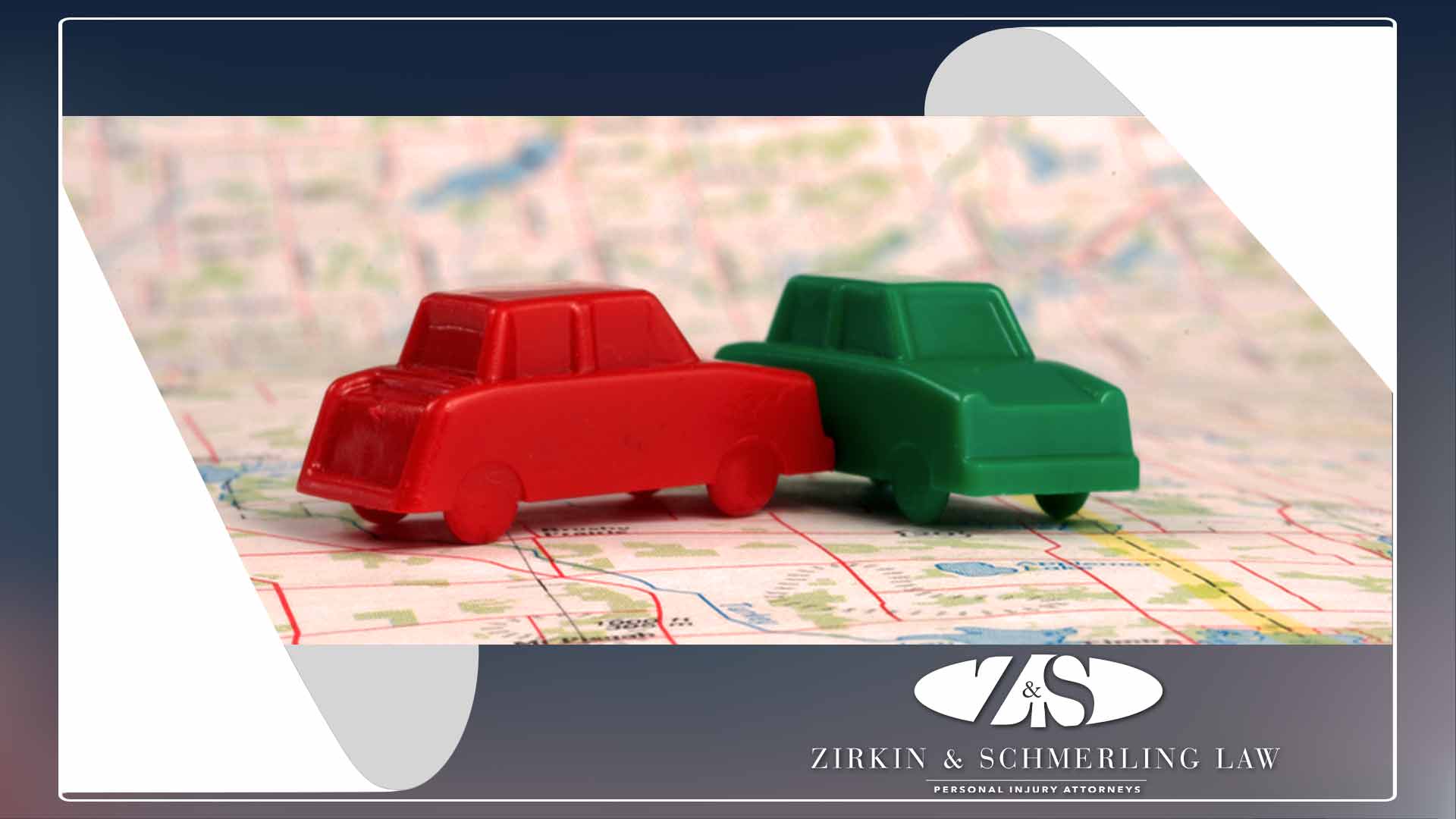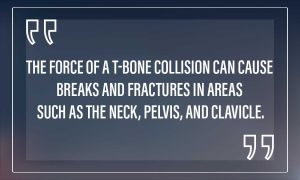
Any car accident is frightening and damaging, but T-bone accidents are among the most dangerous you can be involved in. Determining who is at fault in a T bone accident is crucial, as it dictates who is financially responsible and how much compensation you can receive for injuries.
What Is a T-Bone Crash?

A T-bone, or broadside crash, occurs when the front of one car hits the side of another. They are called T-bone accidents because the two vehicles form the shape of a “T.” T-bone accidents are among the most dangerous because car sides don’t absorb as much force as front and rear ends. The trunk absorbs impact in a rear-end collision, and the engine absorbs impact in front-end accidents. Therefore, it is not surprising that the Insurance Institute for Highway Safety (IIHS) reports that side-impact accidents accounted for almost one-quarter of vehicle occupant fatalities in car accidents in 2020.
What Causes T-Bone Accidents?
Most T-bone accidents occur when one driver fails to yield the right-of-way to another and then hits the other vehicle on the side. These collisions are most common at intersections with traffic lights or stop signs.
Here are some of the common reasons that a driver fails to yield the right of way and causes a T-bone accident:
- They misjudge the gap in traveling traffic or the speed of the oncoming traffic
- An obstructed view
- Failure to properly check road conditions, such as blind spots
- Distractions due to cell phone use, texting, or conversations with passengers
- Running a red light
- Aggressive driving
- Impaired driving due to fatigue, alcohol, or drug use
- Dangerous road conditions
What Are Some Common Injuries from T-Bone Accidents?
Although many cars now have side-impact airbags, they might not protect the driver or passenger from injuries in a T-bone accident. When a T-bone accident occurs, the person who is closest to the point of impact may suffer life-threatening injuries. Some of the most common include:

- Organ shear: Although seat belts restrain drivers and passengers from impact during collisions, they can tear vital organs and cause intestinal perforation, lacerations, or other serious injuries.
- Fractures: The force of a T-bone collision can cause breaks and fractures in areas such as the neck, pelvis, and clavicle.
- Tissue injuries: T-bone accidents often damage ligaments, muscles, and tendons. Whiplash involves muscles, discs, nerves, and tendons in the neck. It can occur if the impact forcibly moves the driver or passenger’s neck back and forth.
- Traumatic brain injuries: The force of a T-bone accident can cause a passenger or driver’s head to hit the steering wheel or windshield, resulting in a traumatic brain injury like a concussion or brain bleed. Traumatic brain injuries can cause permanent deficits in cognitive processes.
- Death: In worse-case scenarios, T-bone accidents are fatal.
How is T-Bone Car Accident Fault Determined?
Maryland follows contributory negligence rules, which means that if you are involved in a T-bone accident and are even one percent at fault, you won’t receive any compensation for damages. For this reason, it is important to determine who is liable.
Zirkin & Schmerling – Maryland Car Accident Lawyers
The skilled car accident attorneys at Zirkin & Schmerling can help determine T bone accident fault if you were involved in one of these dangerous collisions. We can walk you through all the necessary steps and ensure you receive the fair compensation you deserve so you can get on with your life and recovery. Let us know how we can help. Contact us today – 410-753-4611.
